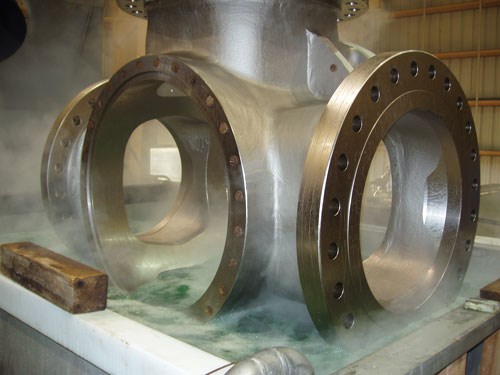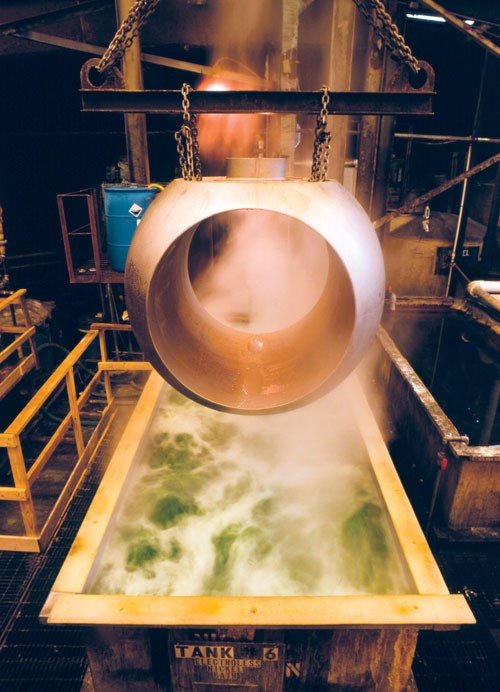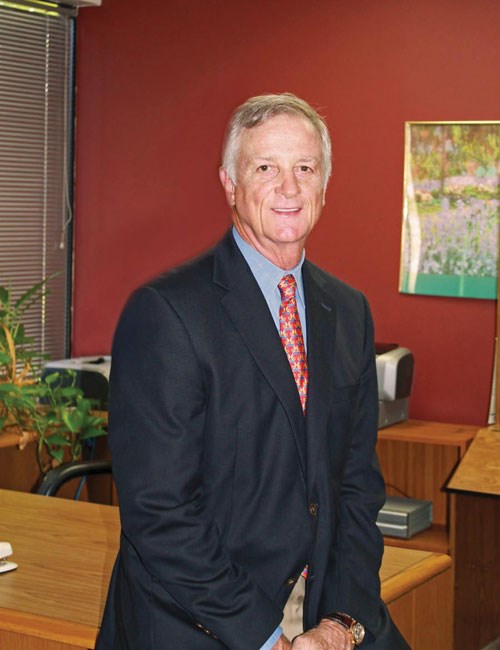For a guy who has been in the surface coatings industry for a relatively short time, Bill Howard and his company, Houston Plating and Coatings, seem to have struck gold. Black gold, that is. Texas tea.
With the boom in the oil and gas industry powering a demand for protective coatings, Howard’s business has exploded with plating orders for the industry, and his Houston-based company is positioned to be ready when the next call comes to plate or coat parts for oil wells, rigs, hydraulic fracturing and other components needed to dig deep and pull money out of the ground.
“We’re riding the wave,” says Howard, an accountant by trade who bought the company in 2003. It has grown in the past decade from $6.5 million in sales and 60 employees to sales of more than $40 million today and more than 300 employees at three locations.
“I didn’t plan it this way,” he says. “I never dreamed we would be where we are, but we’ve been at the right place at the right time. And we’ve provided exceptional service to our customers, and that’s what really matters.”
Houston Plating has specialized in electroless nickel, spray coatings and other corrosion protection services for petroleum equipment makers and other manufacturers since 1988.
Business been has been so good that the company is:
- Running at capacity in its Houston plant and looking to expand.
- Currently expanding capacity at its Humble plant northeast of Houston by 50 percent.
- Building a new, 80,000-sq-ft plant in Louisiana that will cost $9 million and employ 120 workers when completed later this year.
Pretty good for a guy who retired from his accounting firm a decade ago to enjoy the good life, only to see his retirement stock go down the drain and be forced back into a career again.
Thankfully, Howard chose the plating and coating industry, which usually isn’t an option for those who want to strike it rich.
Oil Boom
Think oil only comes from the Middle East? Think again.
The American Petroleum Institute (API) says that, at 9.6 million barrels a day, the United States is third behind Saudi Arabia (10.5 million) and Russia (10.1 million) in producing crude oil.
More important, refineries in the U.S. have a capacity to handle about 18 million barrels a day if needed, and many oil companies want to get to that level as quickly as possible.
“We have more energy resources than Saudi Arabia, more than China, and more than Iran, Iraq, Libya and Kuwait combined,” says Jack Gerard, API president and CEO. “We are an energy-rich nation. What the U.S. needs now is the political will to act.”
That includes government approval of the Keystone Pipeline System, which could transport synthetic crude oil and diluted bitumen from the Athabasca Oil Sands in northeastern Canada to multiple refineries in the United States, including in Illinois, Oklahoma and Texas.
It would mean more equipment and more coating jobs to protect the pipeline from the harsh environment through which it would travel.
But Howard had no idea of any of this back in 2003 when he took over the five-year-old Houston Plating Co.
Basketball to Plating
As a basketball player at Rice University and a graduate student at the University of Texas, Howard says he always dreamed of owning his own business and running it the way he wanted.
He went to work for accounting firm Arthur Andersen after college and spent 29 years helping other business owners make fortunes. He retired, but then saw his nest egg vanish when Arthur Andersen went under in the Enron scandal, making his stocks virtually worthless.
“I had to get a job again,” Howard says. He spoke with some former clients who pushed him toward Houston Plating, “but I had no idea what any of the plating stuff was about. I couldn’t tell you what electroless nickel meant.”
But what Howard did understand were the intrinsic details of running a business, and he quickly realized that, as a service company, his plating shop had to be able to service the customer.
“With coatings, we were always the last stop between a part getting sold into the market or being used to drill holes in the ground,” he says. “That meant the customer wanted it fast, and we had to reconcile their need with our capabilities.”
Howard studied supply chain systems to see how his company could get products coated and to the customer more quickly. He spent so much time analyzing data and systems that he eventually wrote a research paper with several Texas A&M professors called “Supply Chain Reengineering: Vendor Managed Services, A Case Study.”
The synopsis of the published paper: “Re-engineering of a coatings supply chain program where the Original Equipment Manufacturer (OEM) transfers the roles and responsibilities associated with the corrosion protection phase of the production cycle to its coating supply chain partner thereby enabling the OEM to focus on its core manufacturing processes.”
Not exactly something you would hear about at a trade-show or conference, but it has worked magnificently for Howard and Houston Plating and Coatings.
From $6M to $40M
Sales in the year he bought the company were $6.5 million, and the next year they jumped to $8.8 million. By 2006, sales had virtually doubled to $12 million. This year, the company will ring in more than $40 million.
One of the keys to Houston Plating’s success has been the Quench-Polish-Quench (QPQ) coating system the company licenses from
Kolene Corporation Nearly every OEM in the oil and gas field specifies this system in coatings because it hardens the parts by heat treating them, too.
QPQ is a combination case-hardening and corrosion-resistance system that has three main steps: nitrocarburizing, polishing and post-oxidizing.
Howard says the deposition process provides distortion-free dimensional stability while hardening the surface of the part—up to three times the strength of carbon steel—thereby producing superior wear resistance, improved fatigue strength and surface lubricity.
According to Kolene, the process starts with a standard salt bath nitrocarburizing cycle, which produces a layer of epsilon iron nitride. The part is then mechanically polished, usually by vibratory finishing, lapping and centerless grinding. From there, the part is re-immersed into the salt quench bath for 20 to 30 minutes, rinsed and then oil dipped.
This last step in the process optimizes the corrosion resistance by creating a 3- to 4- micrometre-thick layer of iron oxide. It also gives the part a black finish. Kolene says the change in surface chemistry from the treatment may be determined by tracking the nitrogen, carbon and oxygen pick-up through use of Auger analysis.
QPQ Process
Because Houston Plating has the exclusive rights to QPQ in parts of Texas and all of Louisiana, the company usually is called on first to treat and coat parts for the oil and gas industry, and Howard says it also then picks up non-QPQ spec work.
That was the case with Houston-based Baker Hughes, a leading supplier of oilfield services, products, technology and systems to the worldwide oil and natural gas industry.
“Before, we were sending trucks day and night to North Carolina,” says Mike Randall, North American line customer service manager for Baker Hughes.
After Houston Plating and Coatings showed Baker Hughes how it could offer the QPQ process—and deliver it on-time and done right—the company got the work.
“(Houston Plating) is a very interactive part of our business,” Randall says. “It’s a partnership that works very well.”
Howard credits his employees with understanding the need to service customers. He repays them in annual profit-sharing checks that Howard terms “substantial.”
“We are a service business; we don’t manufacture anything,” Howard says. “To build your service, you look at what your customers need and try to arrange your processes to match those needs in terms of what you’re offering and how you’re doing it, and in terms of deadlines.” n















.jpg;maxWidth=300;quality=90)







